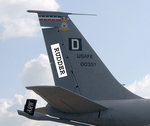Rudder
|
|
FirstKnownRudder.jpg
A rudder is a device used to steer a ship or other watercraft. In its simplest form, a rudder is a flat sheet of material attached with hinges to the ship's stern. A tiller - basically, a stick or pole - is attached to the top of the rudder to allow it to be turned in different directions.
Invention of the rudder
Oars mounted on the side of ships for steering are documented from the 3rd millennium BCE in Ancient Egypt in the form of artworks, wooden models, and even remains of actual boats. These evolved into quarter rudders, which were used in Antiquity until the end of the Middle Ages in Europe. As the size of ships and the height of the freeboards increased, quarter-rudders became less satisfactory and were replaced in Europe by the more sturdy stern-mounted rudders with pintle and gudgeon attachment from the 12th century. The West's oldest known depiction of a stern-mounted rudder can be found on church carvings dating to around 1180.
The world's oldest known depiction of a stern-mounted rudder can be seen on a pottery model of a Chinese junk dating from the 1st century CE, predating their introduction in the West by a thousand years. The Chinese stern-mounted rudder is hung from the stern and held in place and controlled with a rope mechanism. The invention of the stern-mounted rudder in the West may have been independent, as its technical specifications certainly differ, although the idea may have been transmited through trade exchanges with the East. Detailed descriptions of Chinese junks during the Middle Ages are known from various travellers to China, such as Ibn Battuta and Marco Polo.
Also, many junks incorporated "fenestrated rudders" (rudder with holes in them, allowing for better control), an innovation adopted in the West in 1901 to increase the manoeuvrability of torpedo boats.
Aircraft rudders
On an aircraft, the rudder is a control surface, usually attached to the fin (or vertical stabiliser) which allows the pilot to control the aircraft in the yaw axis. It is not used to effect turns—the ailerons are used for that—but the rudder is necessary to correctly balance the various acting forces in a turn. By convention, the rudder is controlled with foot pedals, usually coupled to bell cranks on the rudder via wire cables. In some (rare) aircraft, there are no rudder pedals as the rudder is controlled with springs associated with the roll control. In some designs, an all-moveable fin is used instead of a rudder.

